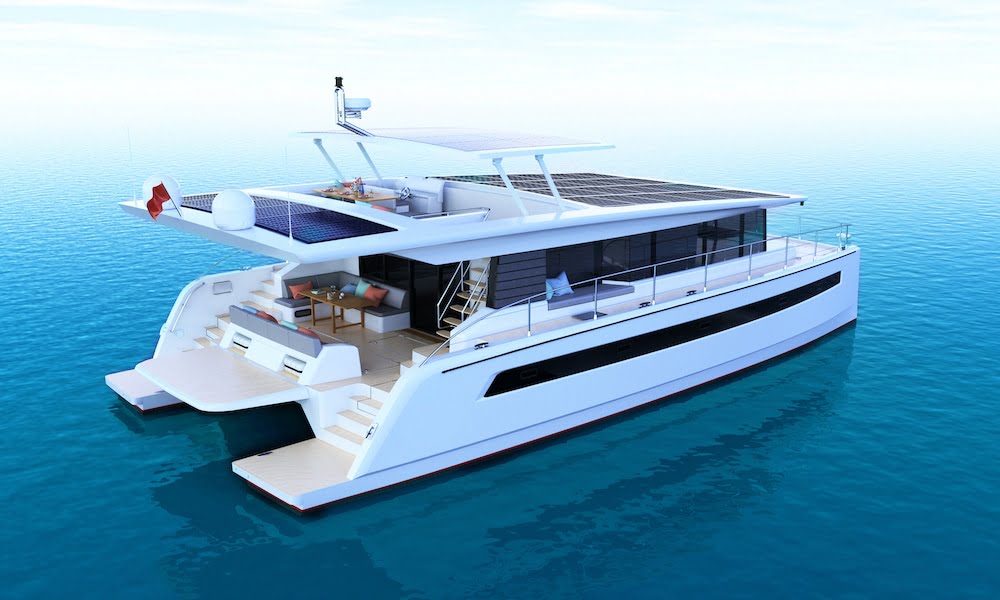Latest Climate-Friendly Yachting.
Latest Climate Friendly Sustainable Yachting

Advances in Yachting. Latest Climate-Friendly Yachting.
In recent years, the emergence of electric yachts represents a significant shift towards sustainable marine transportation. These vessels integrate advanced electric propulsion systems, leveraging technologies such as lithium-ion batteries, electric motors, and solar panels. Unlike traditional yachts powered by fossil fuels, electric yachts offer quieter operation, zero emissions, and reduced environmental impact, aligning with growing concerns about carbon footprints in the maritime industry.
Introduction - Latest Climate-Friendly Yachting
Electric yachts typically feature high-capacity lithium-ion batteries that store and provide energy for propulsion and onboard systems. These batteries are designed to offer extended range and reliable performance, enabling longer journeys without the need for frequent recharging. Advanced battery management systems optimize energy usage and ensure the longevity of the battery packs, enhancing the overall efficiency and sustainability of electric yachts.
Moreover, with the latest climate-friendly yachting electric yachts often incorporate regenerative braking technology, which allows the vessel to recover some energy during deceleration, further extending the range and enhancing energy efficiency. Some models also integrate innovative features like hydro-generators and wind turbines to harness renewable energy sources while at sea, reducing reliance on shore charging infrastructure. These cutting-edge technologies position electric yachts at the forefront of sustainable maritime transportation, catering to environmentally conscious consumers and shaping the future of the yachting industry.
The downside! – electric boats or yachts are generally not considered as powerful as conventional internal combustion engines resulting in unsustainable long term high speeds, long battery charging times and possible ‘range anxiety’ when out of port.
So, how does an electric boat or yacht work?
A battery-powered electric boat is powered by an electric motor connected to batteries, and has 6 primary components which in a nutshell are:
Charger:
Transfers the electrical energy from the electricity source (solar power, wind power, water/hydro power or mains shore power) to the battery bank via a regulator which probably incorporates circuit filters and conditioners replacing the need for traditional fuel. This electrical energy is then transfered to the batteries from the charger.
Battery banks or array's:
Batteries store the electric energy inside the boat ready for use. Normally an array of batteries are needed. Capacity and type (lead/acid, solid state, super-capacitors) are important factors in determining the range, performance and safety of an electric boat. These are probably the heaviest components and should be sited at a lowest location on the boat.
Charge controllers:
They regulate amps and voltage during the transfer of electrical energy from the battery according to the battery’s specification before sending it safely to the electric motor controller.
Motor controller:
Coordinates the speed, torque, and direction of the motor. Could be described as the yacht throttle.
Electric motor/s:
Converts electrical energy from the batteries into mechanical energy to power the propulsion unit.
Propulsion unit:
Moves the boat through the water using mechanical power (propeller or jet) transmitted from the electric motor.
The latest climate-friendly yachting as in electric yachts have complex yet clever engineering, replacing traditional fuel system, engines and gearboxes. This means far fewer moving parts than petrol and diesel inboards or outboards, which is the reason for their higher reliability, lower maintenance and longer lifetime.
Latest Climate-Friendly Yachting Maintenance
Living aboard a 10-meter electric catamaran offers a unique blend of sustainability and comfort, with maintenance focusing on both the vessel’s electric primary propulsion and sub systems with a traditional marine upkeep. Routine tasks include inspecting and servicing the electric motors, batteries, and charging systems to ensure reliable performance for the latest climate-friendly yachting.
Additionally, regular hull maintenance, such as cleaning and antifouling, remains essential to preserve the vessel’s integrity. Given the reliance on electric power, monitoring energy usage and optimizing efficiency becomes paramount, requiring vigilance in managing power consumption and battery levels.
While initial investment costs may be higher due to the advanced propulsion technology, long-term savings can be substantial, with reduced fuel expenses and lower environmental impact. However, occasional expenses may arise for battery replacements, upgrades e.g introducing solar panels and repairs, necessitating budgeting for these contingencies to maintain uninterrupted cruising climate-friendly yachting.
Expenses associated with living aboard a 10-meter electric catamaran encompass a spectrum of costs, including mooring or docking fees, insurance, and registration expenses. Given the reliance on electricity, provisioning for shore power or investing in renewable energy sources, such as solar panels or wind turbines, may incur upfront costs but contribute to long-term sustainability and autonomy.
Ongoing maintenance and servicing of onboard amenities, such as refrigeration units and electrical systems, are essential to ensure comfortable living conditions.
So, while the initial investment and maintenance costs of an electric catamaran may be higher compared to conventional vessels, the long-term benefits of reduced environmental footprint and operational expenses make it an attractive option for eco-conscious sailors seeking a blend of modern technology and seafaring lifestyle onboard the latest climate-friendly yachting.
